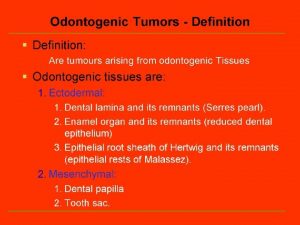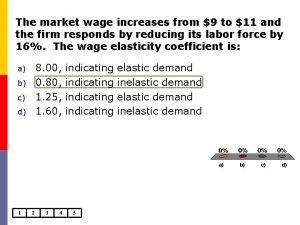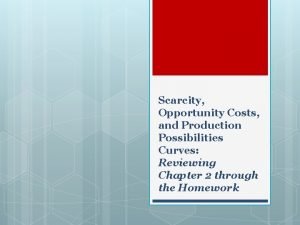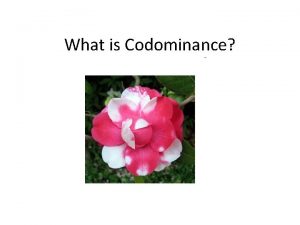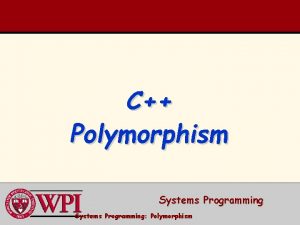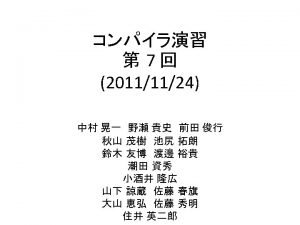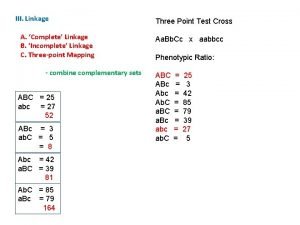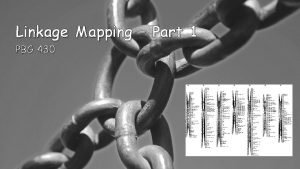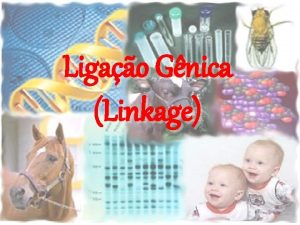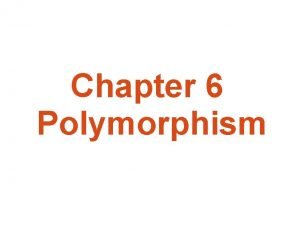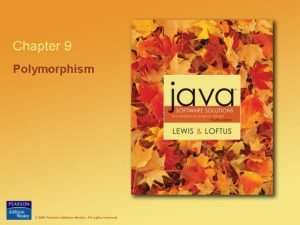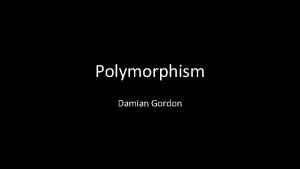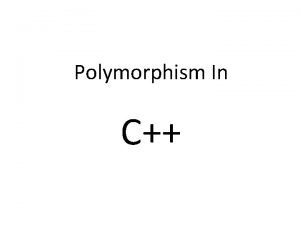MHC diversity arises from Polygenicity Polymorphism Codominance Linkage


![Polygenicity: n [ISV] (1941) : possessing any of a group of nonallelic genes that Polygenicity: n [ISV] (1941) : possessing any of a group of nonallelic genes that](https://slidetodoc.com/presentation_image/74b3c468982a9863894202dabd400001/image-3.jpg)










- Slides: 13


MHC diversity arises from: • Polygenicity • Polymorphism • Co-dominance • Linkage disequilibrium
![Polygenicity n ISV 1941 possessing any of a group of nonallelic genes that Polygenicity: n [ISV] (1941) : possessing any of a group of nonallelic genes that](https://slidetodoc.com/presentation_image/74b3c468982a9863894202dabd400001/image-3.jpg)
Polygenicity: n [ISV] (1941) : possessing any of a group of nonallelic genes that collectively control the inheritance of a quantitative character or modify the expression of a quantitative character Polymorphism: n [ISV] (1839) : the quality or state of being able to assume different forms: as a : existence of a species in several forms And by extension: existence of a gene in several forms

Co-dominance: • Full expression in the heterozygous state Linkage disequilibrium: • When the observed frequencies of haplotypes in a population does not agree with haplotype frequencies predicted by multiplying together the frequency of individual genetic markers in each haplotype. http: //hal. weihenstephan. de/genglos/asp/genreq. asp ? nr=519

MHC haplotypes are in disequilibrium: Two explanations are offered: 1. There has not been enough “evolutionary” time to achieve equilibrium 2. Some allelic sequences in the haplotype are adaptive (i. e. , they are suited to displaying frequently occurring “foreign” peptides. )

Haplotype: • Think “Polygenicity, ” “polymorphism, ” “co-dominance, ” and “linkage disequilibrium”….

Haplotype: • Think “Polygenicity, ” “polymorphism, ” “co-dominance, ” and “linkage disequilibrium”….

Genetic organization in the mouse is similar… continue to think about polygenicity, polymorphism, co-dominance, and linkage disequilibrium

And, the result is:

So… that’s the genetics… what does the synthesis of the protein look like?

“Classical” and “non-classical” MHC’s “Classical” are expressed continuously. “Non-classical” are expressed in specific tissues and/or at specific times.

Linkage disequilibrium Some haplotypes correlate with increased incidence of disease. Such association is measured by a “relative risk” factor (RR). (again) RR = (Ag+/Ag-) disease ___________ (Ag+/Ag-) control Question: to what does “Ag+” refer? )

MHC- III • • • Complement Tumor necrosis factor Heat shock proteins Hydroxylases (generally) genes related to inflammation
 Bootstrap loaders
Bootstrap loaders Buddhism
Buddhism Hedging and derivatives
Hedging and derivatives Monopoly graph
Monopoly graph Unicystic ameloblastoma
Unicystic ameloblastoma Basis risk arises due to
Basis risk arises due to The principal-agent problem arises primarily because
The principal-agent problem arises primarily because The law of increasing opportunity costs arises because
The law of increasing opportunity costs arises because Basis risk arises due to
Basis risk arises due to Material yield variance arises due to change in the
Material yield variance arises due to change in the Classification of risk
Classification of risk One major barrier to entry under pure monopoly arises from
One major barrier to entry under pure monopoly arises from Balance sheet hedge translation exposure
Balance sheet hedge translation exposure Genetic diversity and biodiversity
Genetic diversity and biodiversity




